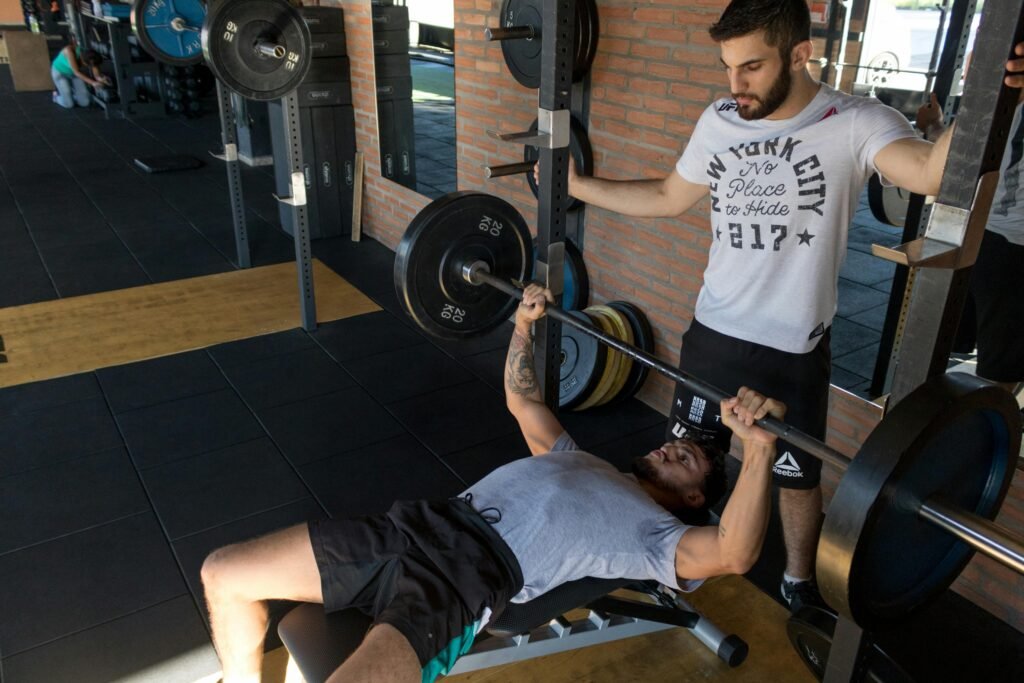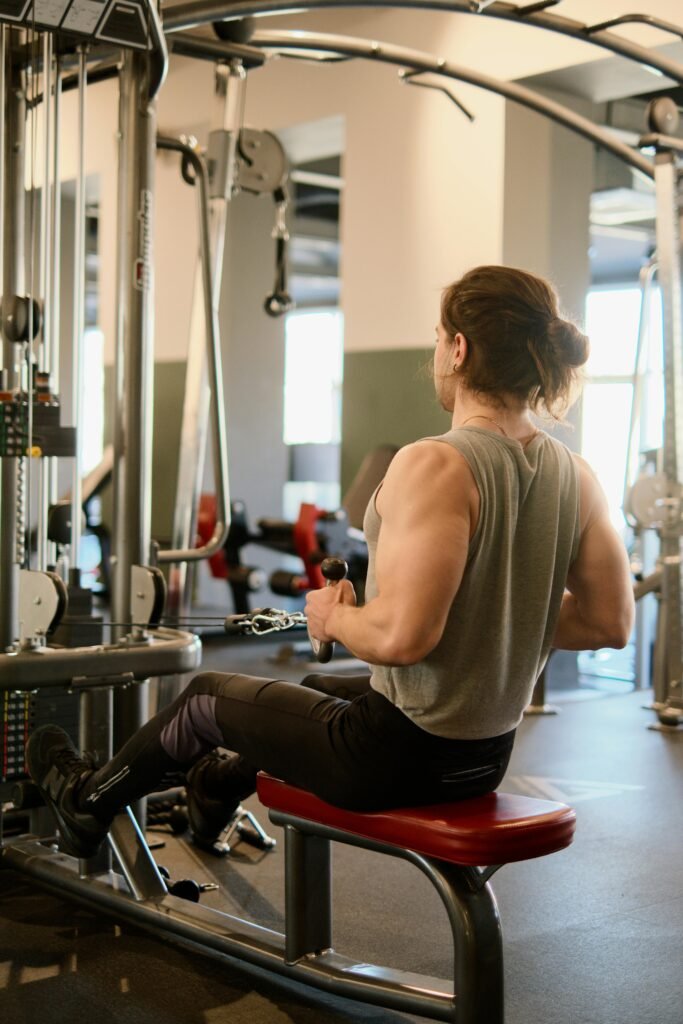In a nutshell, the goal many want to accomplish when beginning a training program for performance improvement, aesthetics, or health is the ability to build muscle instead of fat. However, there can be a fine line between the two, especially if you are just starting a new program or changing your diet. We’ll explain the important principles you need to know for a solid build without packing on fat and with a long-term plan toward your fitness goal.
The Basics of Muscle Building
Hypertrophy is the process of ensuring that one’s body develops muscle and not fat. In this way, we must look at two primary factors which, when related, will help to ensure muscle growth while avoiding the storage of fat: progressive resistance training and good diet.

- Progressive Resistance Training: This means the gradual increase of the weight, reps, or intensity of exercises over time. The shuffling exercises with increasing loads keep the working muscle(s) on guard and stimulate growth.
- Good Nutrition: The building of muscle also requires an extra surplus in calories. However, this surplus has to be monitored carefully to ensure that excess calories go toward muscle growth instead of fat gain.
The Importance of Strength Training
While cardio may be great for cardiovascular health and fat loss, strength training is what matters for building muscle. Compound movements such as squats, deadlifts, bench presses, rows, and overhead presses activate many muscle groups and are able to promote muscle fibers for growth to a greater extent.
- Use compound exercises: Choose exercises that work on multiple muscle groups (squats, deadlifts, and bench presses) to combine and maximize the muscle-building potential.
- Train each muscle group 2-3 times a week: Consistency and frequency are important if muscle growth is to occur. Training each muscle group several times per week will guarantee that those muscles receive the stimulation they need in order to grow.
Caloric Intake Management
To build muscle, a caloric surplus—consuming more calories than the body burns—is needed. Muscle building entails adding muscle, not needless fat, so here’s how to keep a balance:

- Calculate your Total Daily Energy Expenditure: This will really be the sizeable percentage of the intake a person will need to work out and bulge to achieve slight bulking.
- Everything goes as per plan: A moderate surplus of 200–500 calories per day is sufficient for muscle gain without excessive fat gain. Accumulating more excess calories may lead to unnecessary fat buildup.
- Restrict activities: Muscle-building calls for a hefty amount of protein. Consume around 1.6–2.2 grams of protein per kilogram of body weight. This will repair and help build muscle tissues.
Macronutrient Breakdown
This includes carbs and fats in a balanced ratio after protein.
- Carbohydrates: Energetically, carbs are concerned with providing energy to the body, especially during training.
- Concentrate on complex carbohydrates: whole grains, fruits, and vegetables. These will help fuel the body with necessary nutrients for muscle growth. A moderate intake of carbs also helps replenish glycogen depleted after hard exercise.
- Fats: Hormonal production would not exist without healthy fats. These would be equally as critical as testosterone in muscle growth. Healthy fats include avocados, olive oil, and other nuts and seeds, as well as fatty fish.
Avoid Excess Cardio
While cardio does wonders for overall health and weight loss, too much interferes with muscle gain. If you are trying to bulk up, concentrate more on resistance training and don’t engage in prolonged cardio exercise that burns more calories than you consume.

- Moderate cardio: You should aim for 2-3 sessions during the week. This is for you if you’re trying to increase muscle. This mode should allow you to burn fat and keep a regulated heart without hampering muscle growth.
- Prioritize strength training: Strength should be the main focus; subsequently, cardio will help in fat loss or conditioning.
Rest and Recovery
Muscle growth does not take place in the gym-instead, it happens in recovery. Rest and recovery are essential so that any muscle-damaging activity during training gets a needed time for restoration and growth. Failure to recover can lead to overtraining, which inhibits muscle growth and increases risk of injury.
- Sleep: You should sleep at least 7-9 hours: every part of the cycle contributes to the release of growth hormone, which is very important for muscle repair and growth.
- Rest days: Rest for 1-2 days of the week for muscle recovery. Active rest does help (think yoga or walking), but avoid anything too taxing that can impede recovery.
Track Progress and Make Adjustments
Building muscle is a slow process, which is why tracking progress is so important in order to see what works and what does not. Here are ways you can track:

- Photos: Taking weekly or monthly progress pictures can help you visualize and record body composition changes that reflect muscle gain without excess fat gain.
- Measurements: Measure your waist, chest, arms, and legs, periodically, to see, as long as your measurements are superseding the fat gain, growth of muscle is going right.
- Strength: Keep track of strength progression over time. If you are progressively lifting weights beyond what it took to exhaust those extra final reps, it speaks to muscle development.
If fat is increasing disproportionately to muscle gain, you will want to lower caloric intake and/or spend more time on resistance training..
Have Patience
Muscle building takes time because it will take time to minimize fat gain. However, the entire process takes time; consistency matters. Do not expect changes overnight or be confused because they are not forthcoming. Put in the dedication with the right balance of training, nutrition, and recuperation, and results will surely come.

Think of Such Supplements (Optional)
These can add to the muscle gain endeavor but will never take the place of a neat diet and training regimen. Some of the more salient supplements having muscle-building properties include:
- Whey protein: An excellent and convenient way of achieving your protein requirements when sufficient whole foods are not eaten.
- Creatine: This is a well-researched and studied supplement that has helped increase strength, muscle mass, and overall workout performance.
- Branched-chain amino acids: These help reduce muscle breakdown and promote recovery, particularly during extremely intense training periods.
Conclusion
While building muscles instead of fat requires the best of both strength training with proper nutrition and properly allowed recovery, solely by focusing on progressive resistance training, managing calorie intake, giving priority for protein intake, and resting sufficiently, one can build muscle leanly and without excessive fat gain. This takes patience and persistence. Muscle does not grow quickly. Having said that, you can count on some good results eventually with the right plan, ultimately building a stronger and leaner body.



